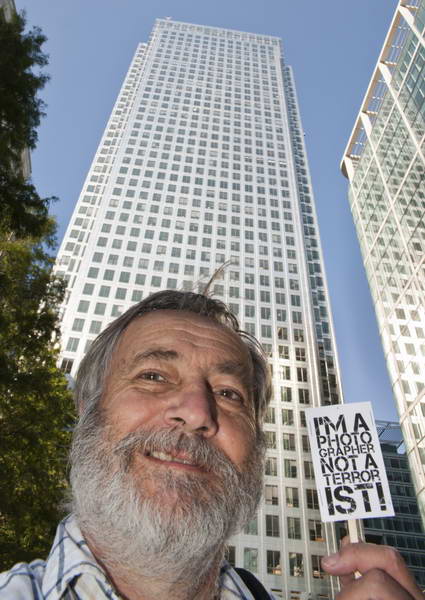The response from the PM’s office to a recent petition on the restrictions on photography was of course bland in the extreme, but the petition itself was perhaps an over-reaction to a measure which perhaps clarified rather than intensified the existing restrictions on photography. When the Counter-Terrorism Act 2008 came into effect I attended and recorded on the demonstration by photographers outside New Scotland Yard. Since then I’ve also mentioned the Home Office circular Photography and Counter-Terrorism Legislation which gave police some generally welcome advice to police about how they should be using the legislation. A description of two sections of the legislation is in each case followed by something the circular designates as Important, that they do “not prohibit the taking of photographs, film or digital images … and members of the public and the press should not be prevented from doing so“.
It was perhaps a shame that in relation to Section 58 – the photography of police etc – the note concerning the statutory defence of reasonable excuse read:
Important:Legitimate journalistic activity (such as covering a demonstration for a newspaper) is likely to constitute such an excuse. Similarly an innocent tourist or other sight-seer taking a photograph of a police officer is likely to have a reasonable excuse.
Although of course the note should not be taken as excluding other activities from having reasonable excuse, it does seem unduly limited. The circular should have stressed more the need for their to be a reasonable presumption that the photographs would be “likely to be useful to a person committing or preparing an act of terrorism” and that it would not cover photography of police carrying out normal activities such as the policing of demonstrations, directing traffic or giving directions to tourists. Or even less normal activities such as beating up demonstrators and damaging property.
Most of the problems that we have with police on the street (and anyone who photographs on the street and claims to never have problems must surely be in police employ) have to do not with the law but with police who like to make their own laws or fail to know or respect the law. Certainly a few police do have it in for photographers, but perhaps rather more fail to appreciate the problems that we face. And of course the police often have plenty of problems at some of the events that we photograph, even if some of them are of their own (or their superior officers) making. It can be instructive to read some of the blogs written by police.
But photographers are definitely finding the job harder, not just because of police, but also because more and more public areas are now controlled by security guards. Increasingly parts of our cities that are spaces open to the public have been privatised, and if you raise a camera to your eye or erect a tripod you are likely to find your view blocked by a large man telling you that you cannot take pictures. And if you are on private land – such as that of Canary Wharf Estates – although it’s very much public, with underground and DLR stations, buses, shops and more where the public are free to pass and spend their money, you have no right to take photographs.
(Security guards do often appear to be trained to be hostile to photographers. Over the years I’ve carried out an education programme, telling them what the law is and asking them to contact their supervisor to check, or to phone for the police. But if the land you are standing on is private, you don’t have a leg to stand on, though I’m a fast worker and have often taken the picture I want before they get to me.)
A couple of weeks ago, the I’m a Photographer not a Terrorist! campaign organised a flash-mob protest at Canary Wharf and around a hundred photographers including many of London’s better editorial photographers turned up on the dot of 3pm to defy the ban and take pictures. Security men watched from a distance but otherwise ignored the protest.

So we photographed ourselves (above) and the other photographers, talked to a few members of the public about the issue and then went for a pint, before I went home to post the story to Indymedia and Demotix. You can read more about it and see pictures of some of the more attractive participants on My London Diary.